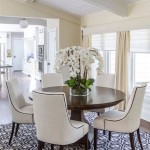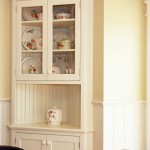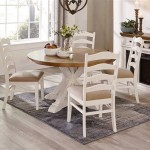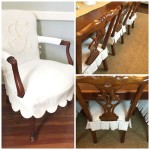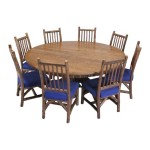Fan Over Dining Room Table: Considerations for Comfort and Aesthetics
The decision to install a fan over a dining room table is a multifaceted one, requiring careful consideration of factors such as ceiling height, room size, fan style, and the intended use of the dining space. While often associated with bedrooms and living rooms, ceiling fans can offer significant benefits in dining areas, particularly in warmer climates or homes lacking central air conditioning.
The primary motivation for placing a fan over a dining room table typically revolves around improved air circulation. A stagnant atmosphere can lead to discomfort, especially during meals, and a ceiling fan can alleviate this by promoting airflow and creating a more pleasant dining experience. However, improper installation or selection can negate these advantages, resulting in a fan that is either ineffective or visually unappealing.
Ceiling Height and Fan Size Considerations
One of the most critical factors to consider is the ceiling height of the dining room. Building codes and safety recommendations generally stipulate a minimum clearance of seven feet between the fan blades and the floor. This is to prevent accidental contact and ensure the safe operation of the fan. In rooms with standard eight-foot ceilings, flush mount fans or hugger fans are often the preferred choice. These models minimize the distance between the ceiling and the fan blades, maximizing headroom.
For dining rooms with higher ceilings, such as those exceeding nine or ten feet, a downrod extension may be necessary. A downrod is a metal pole that suspends the fan further from the ceiling, allowing for optimal air circulation and preventing the fan from appearing dwarfed by the room's height. The appropriate downrod length is determined by the ceiling height; a general rule of thumb is to add six inches of downrod for every foot of ceiling height above eight feet.
Fan size is another crucial consideration that is directly related to the size of the dining room. A fan that is too small will be ineffective at circulating air throughout the space, while a fan that is too large can create an overwhelming draft and potentially disrupt the dining experience. Fan sizes are typically measured by the blade span, which is the diameter of the circle created by the rotating blades. A dining room smaller than 75 square feet usually only requires a fan with a blade span of 36 inches or less. Rooms between 75 and 144 square feet benefit from a 42-inch fan. Larger dining areas between 144 and 225 square feet generally require a 52-inch fan, and spaces exceeding 225 square feet may need a 56-inch or larger fan, or even multiple fans strategically positioned throughout the room.
Style and Aesthetics: Integrating the Fan into the Dining Room Design
Beyond functionality, the aesthetic appeal of the fan is a significant factor in its selection. The fan should complement the existing décor and style of the dining room. Modern dining rooms may benefit from sleek, minimalist fans with clean lines and metallic finishes. Traditional dining rooms might call for fans with ornate details, wood finishes, and integrated lighting fixtures. Coastal-themed dining rooms could incorporate fans with palm leaf blades or nautical-inspired designs.
The finish of the fan's motor housing and blades should also be carefully considered. Common finishes include brushed nickel, oil-rubbed bronze, black, white, and various wood tones. The chosen finish should coordinate with other hardware and fixtures in the room, such as lighting fixtures, cabinet pulls, and door handles. Consistency in finishes creates a cohesive and visually appealing space.
Lighting is another important aspect of fan design. Many ceiling fans come with integrated light kits, which can provide ambient lighting or serve as the primary light source for the dining room. The type of lighting fixture should be chosen based on the desired level of illumination and the overall aesthetic of the room. Options range from simple globe lights to more elaborate chandeliers or multi-light configurations. The light bulbs used in the fixture should also be selected carefully, considering factors such as brightness, color temperature, and energy efficiency. LED bulbs are increasingly popular due to their long lifespan and low energy consumption.
The number of blades on the fan can also influence its appearance and performance. While fans with more blades are often perceived as providing better airflow, this is not always the case. The shape, pitch, and material of the blades are more important factors in determining airflow efficiency. However, the number of blades can affect the overall aesthetic of the fan. Fans with fewer blades tend to have a more modern, minimalist look, while fans with more blades can appear more traditional or ornate.
Operational Considerations: Noise, Control, and Maintenance
The operational aspects of a dining room fan are crucial to ensure a comfortable and enjoyable dining experience. One of the primary concerns is noise. A noisy fan can be distracting and disruptive, particularly during meals. When selecting a fan, it is essential to look for models that are designed for quiet operation. This is often indicated by the fan's motor type and construction. DC motor fans are generally quieter and more energy-efficient than AC motor fans. The quality of the bearings and the balance of the blades also contribute to the fan's noise level.
Control options are another important consideration. Most ceiling fans come with a pull chain for controlling the fan speed and light. However, remote controls and wall controls offer greater convenience and flexibility. Remote controls allow users to adjust the fan speed and light from anywhere in the room, while wall controls can be mounted on the wall for easy access. Some fans also offer smart home integration, allowing users to control the fan with their smartphones or voice assistants. Smart fan controls can also be programmed to automatically adjust the fan speed based on the room temperature or humidity.
Proper maintenance is essential to ensure the longevity and optimal performance of the dining room fan. Regular cleaning is necessary to prevent dust buildup on the blades and motor housing. Dust can reduce the fan's efficiency and contribute to noise. The blades can be cleaned with a soft cloth or a damp sponge. The motor housing can be wiped down with a dry cloth. It is also important to periodically check the fan's screws and connections to ensure they are tight. Loose screws can cause the fan to wobble or make noise. The fan's blades should also be inspected for any signs of damage or wear. Damaged blades should be replaced to maintain the fan's balance and performance. If the fan has a light kit, the light bulbs should be replaced as needed.
The direction of the fan's rotation is also important to consider. In the summer, the fan should rotate counterclockwise to create a downward airflow that cools the room. In the winter, the fan should rotate clockwise at a low speed to circulate warm air that has risen to the ceiling. This can help to reduce heating costs and improve overall comfort.
Finally, it is crucial to ensure that the fan is properly installed by a qualified electrician. Improper installation can pose a safety hazard and can also void the fan's warranty. The electrician should be able to assess the ceiling structure and wiring to ensure that it is adequate to support the weight of the fan. The electrician should also be able to properly connect the fan's wiring and ensure that it is grounded correctly.

Yay Or Nay Ceiling Fan Over The Dining Table At Home In Love

Yay Or Nay Ceiling Fan Over The Dining Table At Home In Love

Yay Or Nay Ceiling Fan Over The Dining Table At Home In Love

Antoine 20 In Indoor 4 Light Small Black Caged Ceiling Fan With Farmhouse Enclosed Remote Hd Cf 16

Yay Or Nay Ceiling Fan Over The Dining Table At Home In Love

Parrot Uncle 42 In Indoor Modern Black Retractable 3 Blade Crystal Ceiling Fan Chandelier With Light Kit And Remote Control F4716110v

Breezary Fandelier 20 In Nickel With Silver Blades Indoor Outdoor Cage Ceiling Fan Light And Remote 5 Blade 23001 Sn At Lowes Com

Ceiling Fan Above Dining Table Design Ideas

Ihomeadore 24 4 In Indoor Black Caged Dc Motor Ceiling Fan With Light Kit And Remote Mda560706ca110v The Home

7 Dining Room Ceiling Fan Ideas For Every Style Ultimate Guide Advanced Systems

